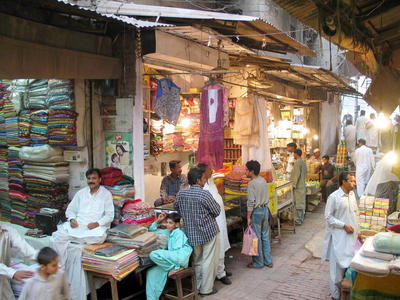Meanwhile, East Asia, whose countries possess diverse backgrounds and relatively little in common historically, has become the world’s most integrated region after the EU. There are many explanations, but the political tension and rivalry between South Asia’s two major players, India and Pakistan, is one key reason.
Over the last year, however, there have been some healthy developments toward resuming better trading relations. The business communities on both sides of the border appear convinced that the liberalisation of bilateral trade would be in their mutual interest. Policy makers also seem to have overcome their reservations, and momentum has been building over the last several months to move the process forward.
The breakthrough came in the form of Pakistan’s decision to grant most favoured nation status to India, moving away from a highly restrictive positive list, containing items that could be imported from India, to a negative list. Out of 8,000 tradable items only 15 per cent are now on the negative list, and this will be phased out by December 2012. The South Asia Free Trade Area, which both India and Pakistan have signed up to, will also gradually phase out all tariffs on traded goods, with zero tariffs by 2016.
Pakistan realises that the liberalisation of bilateral trade will not only benefit both economies, but also remove barriers to regional integration within South Asia. For Pakistan, the potential advantages from broader regional economic integration seem quite significant. Its economy lags behind others, and Pakistan has not taken advantage of its strategic location between China and India. But with the signing of an FTA with China, Pakistan’s markets and producers have already adjusted to cheaper imports. Thus the threat of Indian products flooding Pakistani markets and displacing domestic industries no longer carries much substance.
Still, there are several major risks that could yet derail the liberalisation process; they will require ongoing attention, with steps taken to mitigate each one. First, there is a huge trust deficit between the India and Pakistan which will take a long time to mend. In particular, many fear the imposition of trade sanctions against Pakistan if something were to go wrong on the security or political front. The possibility of a knee-jerk reaction cannot be ruled out, and may inhibit the establishment of a long-term relationship between the two countries.
Second, South Asian political parties, which act quite differently when in opposition than when in power, could join the ranks of detractors in an effort to score political points. For example, the political backlash caused by a potential trade imbalance with India could place undue pressure on the Pakistani government, which may choose to sacrifice trade in order to survive. Such fickle, populist action is counterproductive to forming durable relationships.
Third, in the short run there will be winners and losers from trade liberalisation. The losers may lobby the government and political parties by complaining that cheap imports are destroying domestic industries and jobs. For example, if small and medium enterprises suffer disproportionately from trade liberalisation, the media could take up their cause and create venom that could hinder trade flows.
To overcome these concerns, India — a much bigger economy accounting for more than 80 per cent of gross regional product and with aspirations to become an economic powerhouse — could demonstrate a greater degree of generosity by unilaterally removing tariff and non-tariff barriers without risking much in return. Extending this offer to other neighbouring countries would ultimately benefit India, as it would reduce hostility, assist its exporting and importing industries, and provide Indian consumers with access to cheaper imported goods. This could generate wider economic benefits for India and its South Asian trading partners in the long run.
Given the large and growing size of its effective market, economic losses to India would be minuscule, while the political goodwill and economic returns would be substantial. Pakistan, Bangladesh and Sri Lanka would be much better off economically if they were able to penetrate the buoyant Indian market. Friendly, peaceful neighbours would aid rather than obstruct India in moving toward its long-term goals. And South Asia, the region with the highest number of people living below the poverty line, would surge ahead.
To manage the fragile India-Pakistan relationship, proactive policies and a vigilant eye on implementation will be required on both sides. It is in the mutual interest of both countries to strive for an enduring long-term relationship that is not prone to sudden disruptions, abrupt retaliations or knee-jerk reactions. This will not be an easy or smooth process — and the necessity of establishing a dispute-resolution mechanism should not be ignored. The usual South Asian bureaucracy-driven approach could sooner or later act as the kiss of death. A private sector-led approach, where problems are solved and the business community simply gets on with the job, has a much better chance of avoiding pitfalls and producing results.
Ishrat Husain is Dean and Director at the Institute of Business Administration, Karachi, and served as Governor of Pakistan’s central bank from 1999 to 2005.

